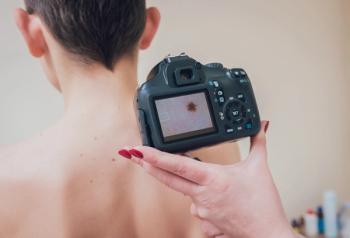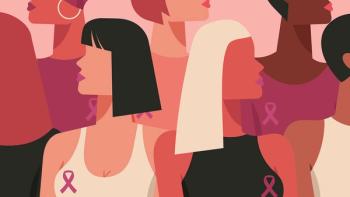
To Bra or Not to Bra? A Good Question for Breast Cancer Survivors
After a mastectomy, a woman is faced with many choices. My advice is to do what is most comfortable and healthful for you. The prosthetic bra, the asymmetrical or flattened chest, reconstruction—any of these choices should feel right if a woman listens to her own heart.
When I was a girl, wearing a bra foreshadowed womanhood. I made my first by cutting a cotton t-shirt in half. Soon enough, my mother bought me a training bra and taught me how to stuff it with tissue.
As I grew older, the bra became an encumbrance. Going braless felt best, and not just because stuffing a bra with tissue seemed impractical. I really did not need a bra until I gave birth at 34. By this time, the bra was not a symbol, but a practicality, like a good sun hat.
After motherhood, I wore a bra more often than not. It was, however, the classic white t-shirt of my childhood that I turned to after a mastectomy to treat invasive breast cancer at the age of 54. Preparing, I bought three t-shirts. These served me well from surgery to radiation and beyond.
Was I self-conscious in the early days with just the one breast? I want to say that I was not, yet I must have been. I wore loose sweaters and developed a technique I termed, “Trompe l’Oeil,” after an art technique, “trick of the eye.” This fashion trick involved bright colors, flashy necklaces and scarves.
After about a year, a friend hinted that it might be time to think about a prosthetic bra. With her support, I agreed to this survivor’s rite of passage. Off we went, my friend helping me the way a sister might, while a fitter fitted me with a lymphedema-friendly prosthesis in a pink dressing room.
Buying the prosthesis and bras was more fun than actually wearing them. I came to look at the prosthesis as an item for dress-up, for occasions I might play with my identity the way I did as a child. It was easier, and more comfortable, just to go lopsided into my day. Soon I worried less about Tromp l’Oeil. I am who I am. I became comfortable with who I am.
Even so, as open as I am to a new normal, I must disclose the fact that I own not one prosthesis, but three. The first fits perfectly. It has a natural drape that works well with a mature body. When I wear it, I blend in. The second I bought in a panicky moment after looking at myself in the mirror soon after purchasing the first. The problem was that the perfect prosthesis is perfect.
My diseased breast, the one with invasive tumors fueled by an over-expressive protein, had never been perfect, in an idealized way, even before it decided to try to kill me. It had always been quite a bit smaller than my other breast. Thus, my "normal" had always been abnormal. To feel normal in a prosthetic bra, I rationalized, I needed to remain asymmetrical. Pursuing asymmetry, and comfort I purchased a microbead form.
I seldom wear any of these prostheses. While I might start out the door in one, I tend to turn back and change into my new normal. Now and then, inspired by traditional fashion, I manage to leave the house with one. A sports bra with microbead form is easiest. While this form shape-shifts, it is light and comfortable. Most often, I prefer layers or my childhood invention, a t-shirt cut in half like a bra with no constraints.
This personal history is not to suggest that your new normal should be my new normal. We have to do what we have to do to go out into the world each day. Some of my friends always wear the prosthetic bra. Others have opted for reconstruction. Whatever you choose, take a deep breath, open the door and enjoy the marvelous performance that stars the human body.





